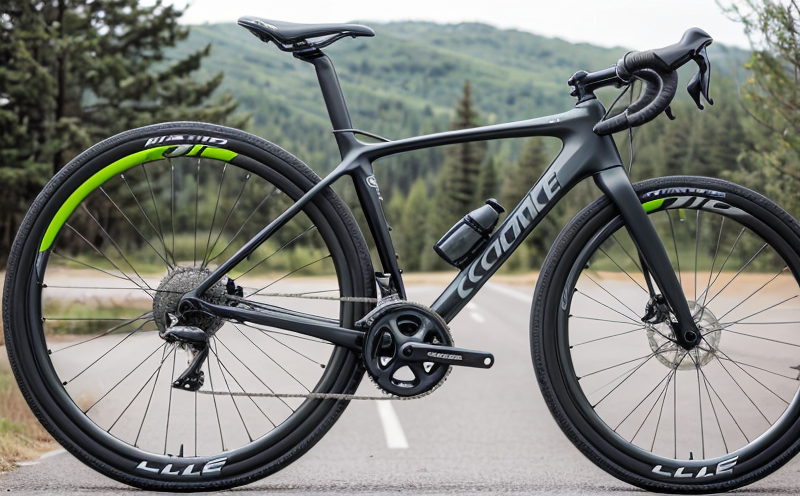IEC 63252 Cycle Life Testing of Batteries in Household Applications
The IEC (International Electrotechnical Commission) standard 63252 is a pivotal document that outlines the method for determining the cycle life and durability testing procedures specifically designed for batteries used in household applications. This service ensures compliance with international standards, which are crucial for quality assurance, reliability, and safety across various sectors such as electronics, automotive, and consumer goods.
Battery cycle life refers to the number of charge-discharge cycles a battery can undergo before its performance degrades to an unacceptable level. Household applications often feature batteries that power devices with varying demands, from smart home gadgets to everyday appliances like remotes or alarm systems. The IEC 63252 standard is essential for manufacturers and quality assurance teams who need to ensure their products meet the stringent requirements of global markets.
Compliance with this standard not only ensures product reliability but also enhances brand reputation by demonstrating a commitment to safety and sustainability. By adhering to these standards, companies can avoid potential recalls and legal issues that arise from non-compliant products. Additionally, compliance aids in meeting regulatory requirements and gaining market access, especially for international sales.
The testing protocol outlined in IEC 63252 involves several key steps: specimen preparation, charge-discharge cycling, temperature control during testing, and performance measurement. Specimens are prepared according to the manufacturer's specifications, ensuring that they represent real-world usage conditions as closely as possible. The cycle life is determined by subjecting these batteries to a series of charge and discharge cycles under controlled environmental conditions.
The standard specifies detailed acceptance criteria, including voltage thresholds and capacity retention levels, which must be met for successful testing. These criteria are designed to reflect the expected performance of batteries in household applications over their intended lifespan. By adhering to these stringent requirements, manufacturers can ensure that their products will function reliably under normal usage conditions.
For R&D engineers and quality managers responsible for product development and compliance, this service provides invaluable insights into how batteries behave under various stress conditions. It enables them to identify potential weaknesses in design early on, allowing for iterative improvements before commercial release. This proactive approach helps reduce the risk of field failures, which can have significant financial implications.
Compliance with IEC 63252 also contributes positively to environmental sustainability by encouraging the development of more efficient and durable batteries. Durable batteries mean reduced waste and lower resource consumption throughout their lifecycle. This aligns with broader industry efforts towards greener manufacturing practices, which are increasingly becoming a focus for responsible corporate citizenship.
The testing process involves several stages: initial conditioning, charge-discharge cycles, monitoring parameters like voltage, current, temperature, and internal resistance, followed by final evaluation based on predefined criteria. Each stage is critical in understanding the battery's performance under stress conditions that simulate real-world usage scenarios.
Environmental and Sustainability Contributions
Battery testing aligns with broader environmental initiatives aimed at reducing electronic waste (e-waste) and promoting resource efficiency. By ensuring batteries last longer, we minimize the frequency of replacements, thereby decreasing overall consumption of raw materials. This contributes to a more sustainable circular economy by extending product lifecycles.
The IEC 63252 standard plays a crucial role in fostering innovation within the battery industry by setting rigorous performance benchmarks that drive technological advancements. Manufacturers are incentivized to explore new chemistries and designs aimed at achieving higher cycle counts while maintaining safety standards. Such innovations not only extend product longevity but also contribute to reduced energy consumption during production processes.
Furthermore, compliance with international regulations like IEC 63252 supports global efforts towards reducing carbon footprints associated with battery manufacturing and disposal. By promoting efficient use of resources and minimizing waste, this standard helps create a more sustainable future for all stakeholders involved in the supply chain.
Competitive Advantage and Market Impact
- Enhanced Reputation: Compliance with IEC 63252 enhances brand reputation by demonstrating a commitment to quality and safety.
- Better Product Performance: Rigorous testing ensures that batteries perform consistently across all conditions, leading to enhanced customer satisfaction.
- Increased Market Access: Meeting global standards opens doors to international markets, broadening product reach and potential sales opportunities.
- Avoidance of Legal Issues: Non-compliance can lead to product recalls and legal challenges. Compliance eliminates these risks, protecting both the company and its customers from potential liabilities.
- Cost Efficiency: By identifying weaknesses early in development cycles through thorough testing, companies save on costly repairs and replacements post-release.
- Sustainability Leadership: Demonstrating environmental responsibility sets a benchmark for other industry players to follow, positioning your company as a leader in sustainability practices.
Use Cases and Application Examples
| Application Example | Description |
|---|---|
| Smart Home Devices | Batteries powering smart thermostats, lighting systems, or security cameras must undergo rigorous cycle life testing to ensure reliable performance over extended periods. |
| Portable Electronics | Battery packs for portable gadgets like tablets, smartphones, and wearable devices need to be tested according to IEC 63252 standards to meet consumer expectations regarding longevity and reliability. |
| IoT Devices | Internet of Things (IoT) devices such as sensors or actuators require batteries that can operate efficiently in remote locations with limited access for replacement. Testing ensures these batteries last long enough without compromising on performance. |
| Alarm Systems | Batteries used in home security systems must be tested to ensure they provide adequate power during emergencies, even after multiple cycles of activation and deactivation. |
| Use Case Scenario | Description |
|---|---|
| Manufacturing Process Optimization | Battery manufacturers can use cycle life test results to optimize production processes, focusing on improving battery durability and reducing defect rates. |
| Product Development | R&D teams leverage IEC 63252 data to design better-performing batteries that meet market demands while adhering to stringent safety standards. |
| Sustainability Reporting | Companies can incorporate cycle life test results into sustainability reports, showcasing their commitment to environmental responsibility and efficient resource use. |





